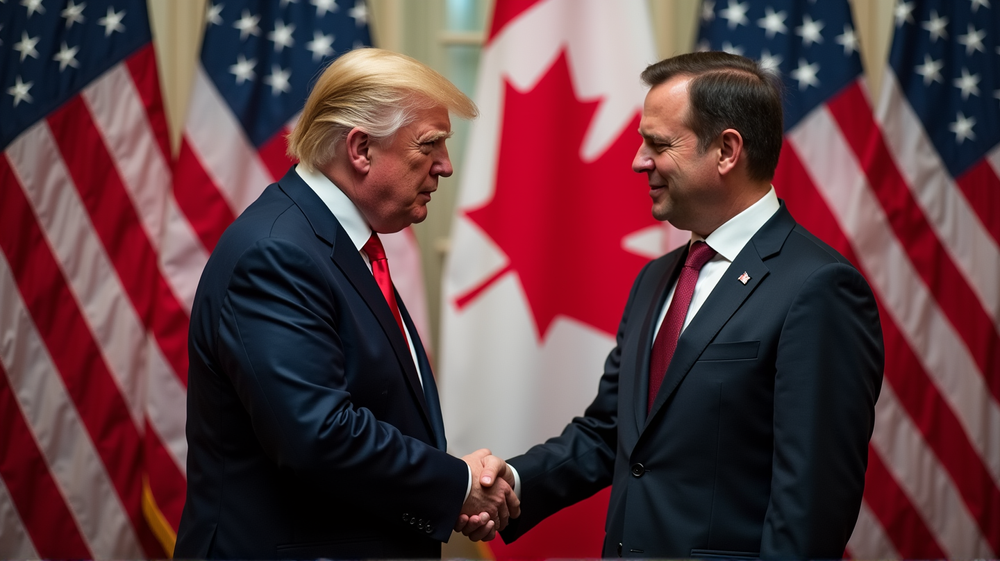Trump's Aggressive Tariffs on Canada: A New Trade War Begins
In a move stirring global economic waters, President Donald Trump has introduced a significant 35% tariff on Canadian goods, disrupting an already fragile international trade ecosystem. As outlined in a letter to the Canadian government, this action aims to pressurize Canada into addressing concerns of fentanyl smuggling through their shared border—an issue that seems relatively low in reality but has earned Trump’s focus.
Global Economic Tensions Rise
With the imposition of these tariffs, the United States signals a potential igniting of a new trade confrontation. This move follows a sequence of tariff escalations targeting other global players such as Vietnam, the UK, and China. While President Trump’s strategy revolves around coercing Canada to take robust steps against the purported fentanyl trafficking, it primarily reflects his frustration over the trade deficit attributed to Canada’s oil purchases.
The Strain on US-Canada Relations
Prime Minister Mark Carney of Canada retorts with calm assurance, asserting that Canada will strive towards establishing a new trade framework with the US. He emphasizes that Canada has made notable progress in tackling the issue of fentanyl and vows to support Canadian workers and businesses despite Trump’s aggressive measures.
Carney’s diplomatic outreach extends to the European Union and the United Kingdom, crafting an alliance to challenge Trump’s visceral policy changes. According to Blanquivioletas, this diplomatic engagement indicates a broader international concern over the unpredictability of US trade policies under Trump, leading to Canada’s strategy of forging stronger ties with other economic powers.
A Tumultuous Trade Landscape
Trump’s sustained attacks, especially on Canada, hint at deeper economic resentment. This includes claims of turning Canada into the 51st state of the US—a hyperbolic aspiration showcasing political animosity.
The Canadian government responds with reciprocal tariffs, announcing duties on US imports, asserting its stance against the tumultuous trade environment created by what some view as Trump’s impulsive decisiveness.
Hours before Trump’s declaration, Carney posted an image with UK’s Prime Minister Keir Starmer, underpinning the theme of global economic unity against erratic US tariff policies. Such movements place the United States in a light of unreliability under Trump’s administration.
Unraveling Trade Deals
The President’s recent tariff announcements extend to 23 countries, notably shaken by personal measures against Canada and Brazil. Yet, purportedly seeking to isolate China, these tariffs seem counterintuitive, impacting trade dynamics with other nations.
Experts critique Trump’s embargo tactics as erratic, often lacking substantive follow-through. Despite this coercive facade, the US has seen successful renegotiation with countries like the UK and Vietnam and has moved to an embryonic trade agreement with China.
Navigating Tariff Regulations
For businesses and consumers looking to grasp the myriad tariff regulations, the Harmonized Tariff Schedule (HTS) offers detailed insights into products imported into the US and applicable tariffs. This tool remains critical for understanding fluctuations and updates in trade tariffs, especially amid an evolving economic climate under President Trump.
Amidst these transformations, the global market braces for the next chapter in Trump’s combative trade saga, nervously anticipating both new challenges and potential resolutions to these incendiary economic disputes.




